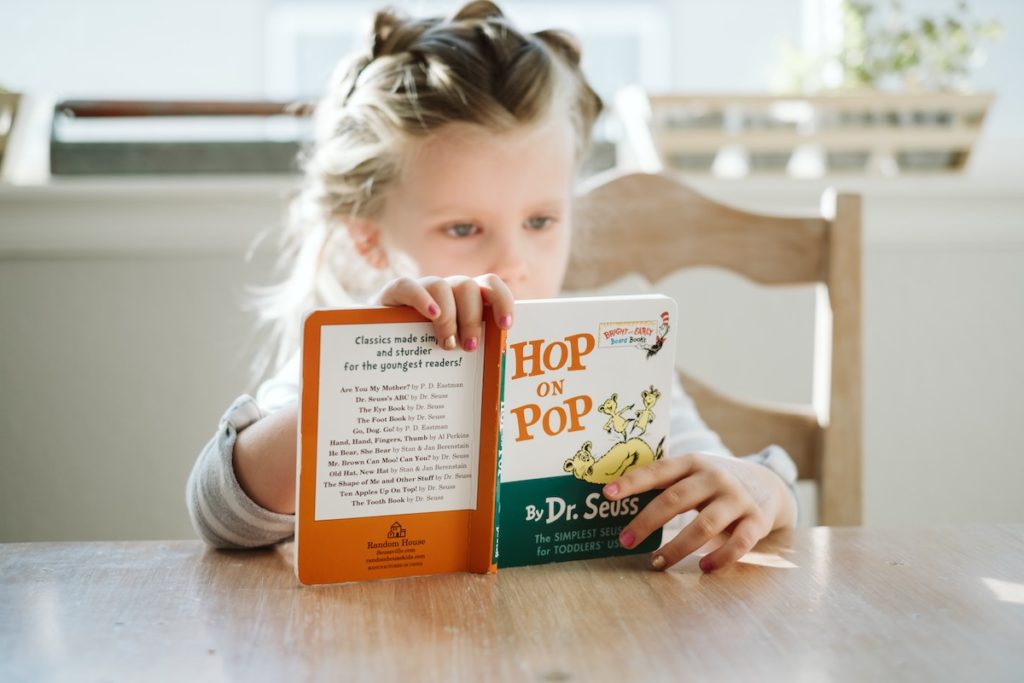
Have you ever found yourself in the position of wanting to change your questionable lifestyle, but realised that it is easier said than done? One of the reasons for this is that you might have spent most of your life engaging in unhealthy behaviours. But why is that?
In an attempt to answer this question, many studies focused on potential factors that might lead to either healthy or unhealthy behaviours (Stone et al., 2012; Degenhardt et al., 2016). However, while factors such as socio-economic status and cultural environment cannot be easily changed, human beings are “architects of their own destiny”, meaning that they can modify themselves and their actions to facilitate or, on the contrary, worsen their own lives.
That is why focusing on the promotion of healthy behaviours such as physical exercise and healthy diet (Ornelas et al., 2007), as opposed to unhealthy behaviours including drinking alcohol and smoking (Marmorstein et al., 2009) is critical, particularly in childhood and adolescence.
Among the activities that promote a healthy lifestyle, existing theories suggest that reading for pleasure might make a substantial difference in the life of young people (Lonigro et al., 2014).
This study by Mak & Fancourt (2020) is the first of its kind to focus on the exploration of an association between reading for fun in childhood and engaging in healthy behaviours when approaching adolescence.

Previous studies have developed theories that reading for pleasure can encourage a healthy lifestyle in young people.
Methods
Participants were drawn by the Millennium Cohort Study (MCS), which is considered to be nationally-representative and follows the lives of approximately 19,000 children born in the UK between 2000 and 2001.
Children were eligible for this study if they did not have twin sibling(s), lived with the biological parents, and completed all the assessments for smoking, drinking alcohol, fruit consumption, and physical activity, at both age 11 and age 14.
Moreover, the authors controlled for all the relevant confounding variables:
- Demographic factors (e.g. children’s gender and ethnicity);
- Child development factors: (e.g. educational performance);
- Children’s mental health (e.g. depressive symptoms);
- Familial factors (e.g. frequency of arguments with children);
- Peer influence (e.g. number of books parents had in the home).
Missing data was dealt with using multiple imputation, while logistic regression models were chosen to explore whether reading for pleasure is associated with a healthy lifestyle before and after controlling for the confounding variables mentioned above.
Results
The final analysis included 11,180 participants from Sweep 5 and 6 of the Millennium Cohort Study (MCS).
Children were more likely to read more often if they were female or had well-educated parents. Besides, children who read daily at 11 years of age displayed healthier behaviours as well as better mental health.
Unhealthy behaviours (smoking and drinking alcohol)
- Daily reading for pleasure at 11 years was associated with a lower risk (at 14 years) to engage in the use of:
- cigarettes (odds ratios (OR) = 0.84, 95% CI = 0.80 to 0.88)
- alcohol (OR = 0.94, 95% CI = 0.90 to 0.98)
- However, after controlling for confounders:
- the association with smoking was attenuated (OR = 0.97, 95% CI =0.91 to 1.02)
- the association with alcohol use was fully explained by those factors.
Healthy behaviours (fruit consumption & physical activity)
- The association between reading for pleasure at 11 years and fruit consumption at 14 years was positive:
- before controlling for relevant factors (OR = 1.22, 95% CI = 1.16 to 1.28)
- after controlling for relevant factors (OR = 1.10, 95% CI = 1.04 to 1.15)
- However, the association with later physical activity was negative, even after controlling for the confounding variables (OR = 0.95, 95% CI = 0.91 to 0.99)
- Moreover, sensitivity analyses highlighted the presence of gender differences, where girls displayed a stronger association with fruit consumption than boys.

Daily reading for pleasure was associated with a lower risk for using cigarettes and alcohol.
Conclusions
The authors concluded that reading for fun in childhood is associated with consuming more fruit as well as being less exposed to both cigarette and alcohol use. However (and maybe not so surprisingly), they found that reading is also associated with a more sedentary life.
In line with previous studies, all the identified confounding variables explained part or most of the associations for unhealthy behaviours. For example, peer influence would explain the association between reading and later smoking or drinking, as it can affect children’s decision to engage in reading and healthy behaviours.
The associations for healthy behaviours were maintained even after controlling for the relevant confounders.

Reading for pleasure is associated with increased fruit consumption, but also with decreased physical activity.
Strengths and limitations
This was the first study to find an association between reading for pleasure in childhood and engaging in healthy behaviours in adolescence. The authors reinforced their assumptions by taking advantage of a large sample and increasing in this way the power of the study. However, though the authors claimed that the sample is representative of the population in the UK, it should be mentioned that a big majority of the sample was of white ethnicity, hence limiting the generalisability of the outcomes to other ethnicities. Of note, they took into account an impressive number of confounding variables and could therefore thoroughly explore potential factors associated with reading for pleasure.
The authors rightly listed a number of limitations of their study. For example, while some of their chosen confounders might lie on the causal pathway for the association, they could not include other potential confounders (e.g. personality traits) in their analyses. In fact, this is a limitation of the chosen study design, as the authors could exclusively rely on the variables assessed by the MCS team. For instance, variables that they would have liked to explore include the type and content of books, more detailed measurements of fruit consumption and exercise, and knowing whether children had access to either cigarettes or alcohol. Another limitation of this design can be represented with the statement “correlation does not prove causation”, which is the case for all observational studies as we cannot say for sure whether reading for pleasure leads to a healthy lifestyle or vice versa.

Although an association between reading for pleasure and healthy behaviours was identified, causation is still unclear.
Implications for practice
This study opens doors to new research studies about reading and its benefits. In terms of implications for research, the authors suggested a number of new research opportunities. For example, since both positive and negative peer influence have an influence on health behaviours, it would be interesting to understand to what extent they affect adolescents’ decisions of engaging in healthy or unhealthy activities. Moreover, they suggest that future studies should use different datasets to include broader variables, such as unhealthy eating instead of fruit consumption.
However, considering how relevant reading is in our lives, I would be personally more intrigued by the idea of discovering whether reading for pleasure does lead to a healthier lifestyle. This could go along with the authors’ suggestion for intervention studies aimed at assessing the potential causal relationship between reading for pleasure and healthy behaviours. Furthermore, I think it would be really interesting to find a way to increase physical activity while saving one or two hours per day to dedicate to reading. If done correctly, I believe that this research has the potential to drive the next generation of readers by making them fully aware of the benefits that this simple but important activity might have on their health in the long term.

More studies are needed to disentangle whether reading for pleasure leads to a healthy lifestyle or vice versa.
Statement of interests
None.
Links
Primary paper
Mak, H. W., & Fancourt, D. (2020). Reading for pleasure in childhood and adolescent healthy behaviours: Longitudinal associations using the Millennium Cohort Study (PDF). Preventive Medicine, 130, 105889. https://doi.org/10.1016/j.ypmed.2019.105889
Other references
Stone, A. L., Becker, L. G., Huber, A. M., & Catalano, R. F. (2012). Review of risk and protective factors of substance use and problem use in emerging adulthood (PDF). Addictive behaviors, 37(7), 747-775. https://doi.org/10.1016/j.addbeh.2012.02.014
Degenhardt, L., Stockings, E., Patton, G., Hall, W. D., & Lynskey, M. (2016). The increasing global health priority of substance use in young people (PDF). The Lancet Psychiatry, 3(3), 251-264. https://doi.org/10.1016/S2215-0366(15)00508-8
Marmorstein, N. R. (2009). Longitudinal associations between alcohol problems and depressive symptoms: early adolescence through early adulthood (PDF). Alcoholism: Clinical and Experimental Research, 33(1), 49-59. https://doi.org/10.1111/j.1530-0277.2008.00810.x.
Ornelas, I. J., Perreira, K. M., & Ayala, G. X. (2007). Parental influences on adolescent physical activity: a longitudinal study (PDF). International journal of behavioral nutrition and physical activity, 4(1), 3.
Lonigro, A., Laghi, F., Baiocco, R., & Baumgartner, E. (2014). Mind reading skills and empathy: Evidence for nice and nasty ToM behaviours in school-aged children (PDF). Journal of Child and Family Studies, 23(3), 581-590.
Photo credits
- Photo by Nong Vang on Unsplash
- Photo by Mona Eendra on Unsplash
